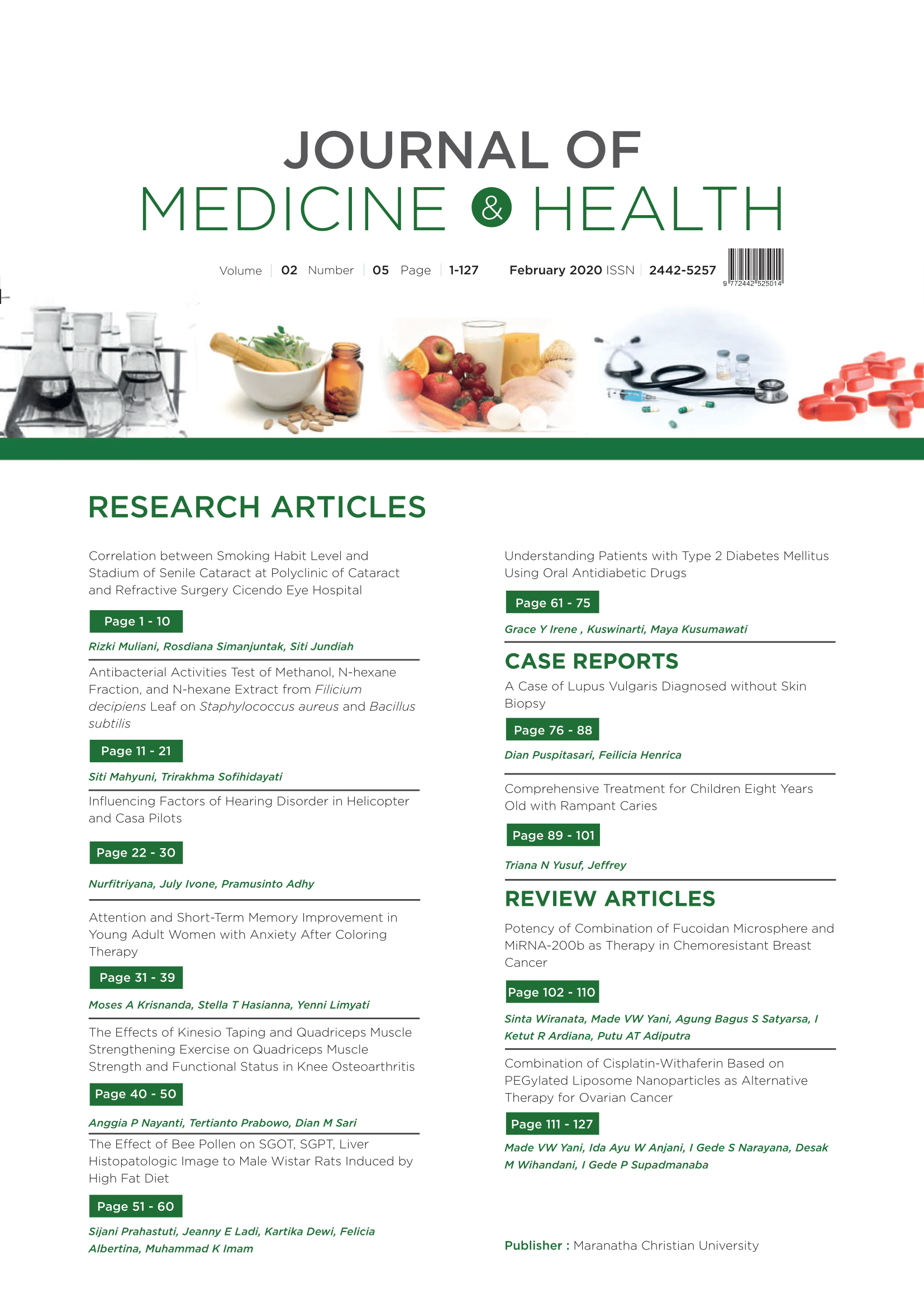A Case of Lupus Vulgaris Diagnosed without Skin Biopsy
DOI:
https://doi.org/10.28932/jmh.v2i5.1839Abstract
Lupus vulgaris is a variant of cutaneous tuberculosis in a previously sensitized individual that has a high degree of delayed-type hypersensitivity to tuberculin. Absolute criteria for the diagnosis of cutaneous tuberculosis is a positive M. tuberculosis culture on guinea pig or polymerase chain reaction (PCR) examination. We reported a case of lupus vulgaris in a 32 years old female. A diagnosis of lupus vulgaris was made by clinical manifestation, therapeutic trial, interferon-gamma release assay (IGRA) test, and other laboratory tests. The patient presented with an erythematous scaly plaque on the face and left hand. Diascopy test was positive, consistent with the “apple jelly” sign. Regression of lesion was observed after 1 month of therapy with anti-tuberculosis drugs. Culture, PCR, and histopathological examination were not established due to patient’s refusal. The patient was allergic to pyrazinamide and ethambutol, therefore she was initially treated with a daily dose of 450 mg Rifampicin, 300 mg isoniazid (INH), and 500 mg levofloxacin for 2 months and continued with maintenance phase, three times weekly of 450 mg Rifampicin and 450 mg INH until one year. Treatment provided a good result. Keywords: tuberculosis; lupus vulgaris; therapeutic trialDownloads
Download data is not yet available.
Downloads
Published
2020-02-27
How to Cite
1.
Puspitasari D, Henrica F. A Case of Lupus Vulgaris Diagnosed without Skin Biopsy. J. Med. Health [Internet]. 2020Feb.27 [cited 2024Jul.3];2(5). Available from: https://journal.maranatha.edu/index.php/jmh/article/view/1839
Issue
Section
Articles
License
Authors who publish with this journal agree to the following terms:
- Authors retain the copyright and grant the journal right of first publication with the work
simultaneously licensed under a Creative Commons Attribution-NonCommercial 4.0 International License that allows others to share the work with an acknowledgement of the work's authorship and initial publication in this journal. - Authors are able to enter into separate, additional contractual arrangements for the nonexclusive distribution of the journal's published version of the work (e.g., post it to an institutional repository or publish it in a book), with an acknowledgement of its initial publication in this journal.
 This work is licensed under a Creative Commons Attribution-NonCommercial 4.0 International License.
This work is licensed under a Creative Commons Attribution-NonCommercial 4.0 International License.















